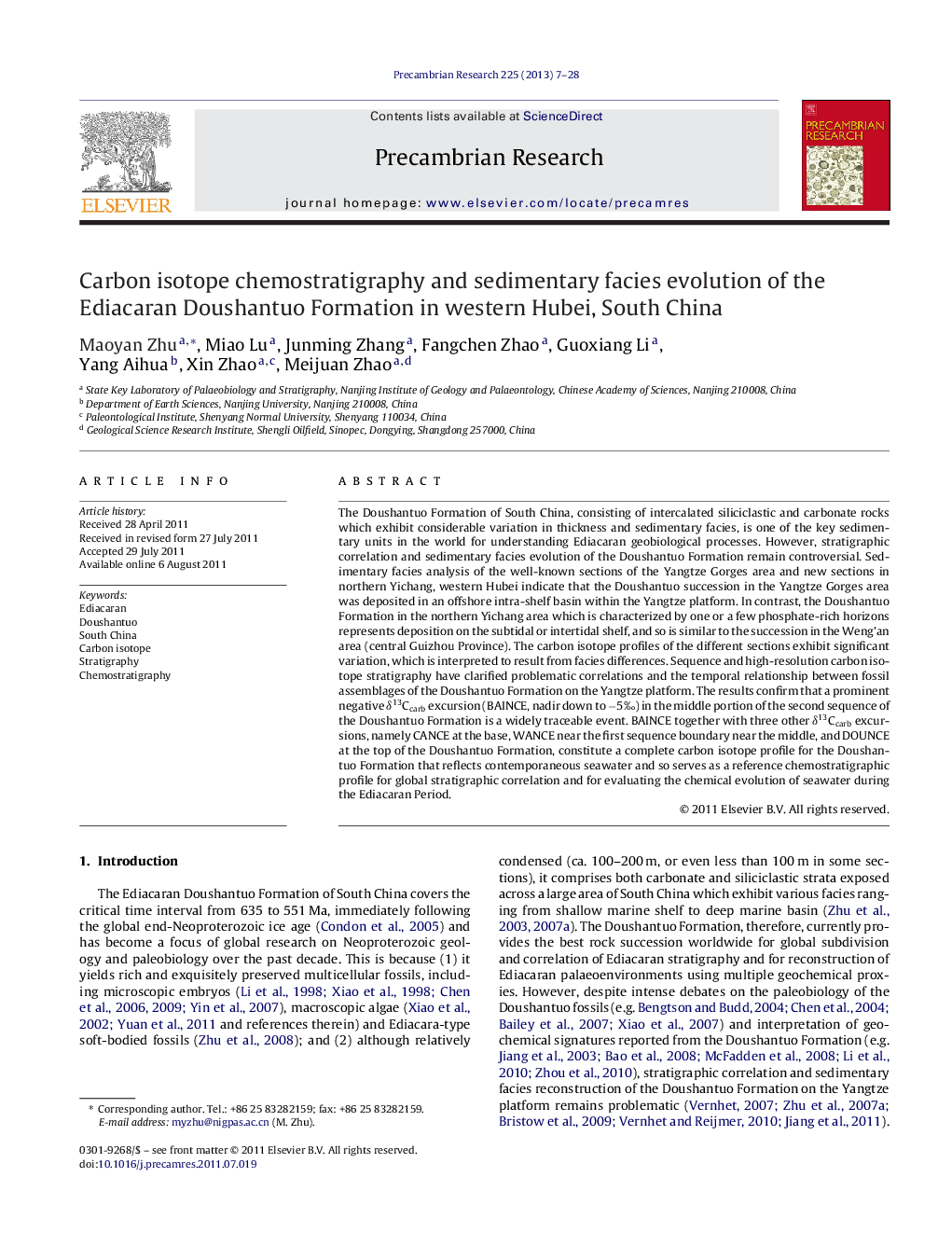| Article ID | Journal | Published Year | Pages | File Type |
|---|---|---|---|---|
| 4723314 | Precambrian Research | 2013 | 22 Pages |
The Doushantuo Formation of South China, consisting of intercalated siliciclastic and carbonate rocks which exhibit considerable variation in thickness and sedimentary facies, is one of the key sedimentary units in the world for understanding Ediacaran geobiological processes. However, stratigraphic correlation and sedimentary facies evolution of the Doushantuo Formation remain controversial. Sedimentary facies analysis of the well-known sections of the Yangtze Gorges area and new sections in northern Yichang, western Hubei indicate that the Doushantuo succession in the Yangtze Gorges area was deposited in an offshore intra-shelf basin within the Yangtze platform. In contrast, the Doushantuo Formation in the northern Yichang area which is characterized by one or a few phosphate-rich horizons represents deposition on the subtidal or intertidal shelf, and so is similar to the succession in the Weng’an area (central Guizhou Province). The carbon isotope profiles of the different sections exhibit significant variation, which is interpreted to result from facies differences. Sequence and high-resolution carbon isotope stratigraphy have clarified problematic correlations and the temporal relationship between fossil assemblages of the Doushantuo Formation on the Yangtze platform. The results confirm that a prominent negative δ13Ccarb excursion (BAINCE, nadir down to −5‰) in the middle portion of the second sequence of the Doushantuo Formation is a widely traceable event. BAINCE together with three other δ13Ccarb excursions, namely CANCE at the base, WANCE near the first sequence boundary near the middle, and DOUNCE at the top of the Doushantuo Formation, constitute a complete carbon isotope profile for the Doushantuo Formation that reflects contemporaneous seawater and so serves as a reference chemostratigraphic profile for global stratigraphic correlation and for evaluating the chemical evolution of seawater during the Ediacaran Period.
► The Doushantuo Formation of South China is one of the key sedimentary units in the world for understanding Ediacaran geobiological processes. ► Sequence and high-resolution carbon isotope stratigraphy have clarified problematic correlations and the temporal relationship between fossil assemblages of the Doushantuo Formation on the Yangtze platform. ► The results indicate that there are four δ13Ccarb excursions which can serves as a global reference chemostratigraphic profile for evaluating the Ediacaran seawater and life evolution.
